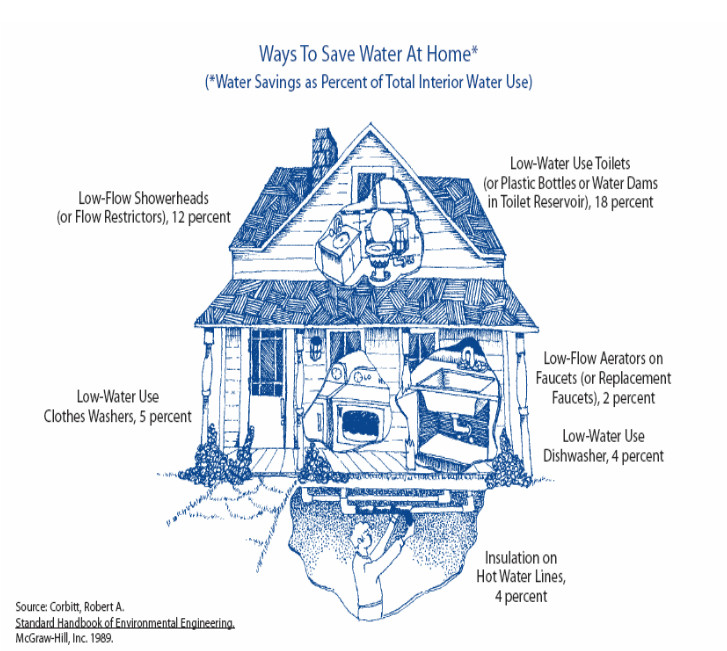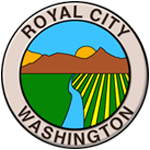Royal City 2025 Water Quality Report
7/28/2025
ROYAL CITY 2025 WATER QUALITY REPORT
Royal City’s Public Works Department is pleased to present this year’s annual Water Quality Report. We want you to understand the efforts we make to continually provide safe and dependable drinking water.
The report lists all regulated contaminants that were found in any amount during the most recent round of testing for a particular contaminant. During the 2024 reporting year, monthly tests were performed on Royal City’s drinking water. Royal City’s Public Works Department is proud to announce that your drinking water quality exceeds all state and federal drinking water standards.
If you have any questions or concerns about your water quality, please contact Maricio Romero, Public Works Director, at 509-346-2263. Royal City’s Public Works Department wants our consumers to be informed about their water service provider.
INFORMATION FROM THE EPA
The sources of drinking water (both tap and bottled water) include rivers, lakes, streams, ponds, reservoirs, springs, and wells. As water travels over the surface of the land or through the ground, it dissolves naturally occurring minerals and, in some cases, radioactive material, and can pick up substances resulting from the presence of animals or from human activity.
Contaminants that may be present in source water include:
Microbial contaminants, such as viruses, parasites and bacteria, which may come from septic systems, livestock, and wildlife.
Inorganic contaminants, such as salts and metals, which can be naturally-occurring or result from urban storm water runoff, wastewater discharges, and farming.
Pesticides and herbicides, which may come from a variety of sources such as agriculture, urban storm water runoff, and residential uses.
Organic chemical contaminants, including synthetic and volatile organic chemicals, which are by-products of industrial processes and can also come from gas stations, urban storm water runoff, and septic systems.
Radioactive contaminants, which can be naturally-occurring or be the result of oil and gas production and mining activities.
Drinking water, including bottled water, may reasonably be expected to contain at least small amounts of some contaminants. The presence of contaminants does not necessarily indicate that water poses a health risk. More information about contaminants and potential health effects can be obtained by calling the EPA’s Safe Drinking Water Hotline (1-800-426-4791).
In order to ensure that tap water is safe to drink, the Department of Health and EPA prescribe regulations that limit the amount of certain contaminants in water provided by public water systems. The food and
Drug Administration (FDA) and the Washington Department of Agriculture regulations establish limits for contaminants in bottled water that must provide a similar degree of safety.
Some people may be more vulnerable to contaminants in drinking water than the general population. Immunocompromised persons such as persons with cancer undergoing chemotherapy, persons who have undergone organ transplants, people with HIV/AIDS or other immune system disorders, some elderly, and infants can be particularly at risk from infections. These people should seek advice about drinking water from their health care providers. EPA/CDC guidelines on appropriate means to lessen the risk of infection by cryptosporidium and other microbial contaminants are available from the Safe Drinking Water Hotline
(1-800-426-4791).
Este informe contiene informacion muy importante sobre su agua beber. Traduzcalo o hable con alguien que lo entienda bien.
2024 Water Quality Information
Royal City: PWSID #74700
|
Inorganic Contaminants |
||||||||
|
Contaminant |
Violation (Y/N) |
Sample Date |
Highest Level Detected |
Range of Detections |
MCL |
MCLG |
Likely Source of Contamination |
|
|
Nitrate (ppm) |
No |
December 2024 |
ND(S03) ND (S04) |
One Sample |
10 |
10 |
Runoff from fertilizer use; leaching from septic tanks; sewage; erosion of natural deposits |
|
|
Fluoride (ppm) |
No |
Oct 2019 March 2018 |
0.65 (S03) 0.64 (S04) |
One Sample |
4 |
4 |
Erosion of natural deposits; water additive which promotes strong teeth; discharge from fertilizer and aluminum factories |
|
|
Disinfection Byproducts |
||||||||
|
Contaminant |
Violation (Y/N) |
Sample Date |
Average Level Detected |
Range of Detections |
MCL |
MCLG |
Likely Source of Contamination |
|
|
Total Trihalomethanes (ppb) |
No |
December 2024 |
9.21 |
One Sample |
80 |
N/A |
Byproduct of drinking water disinfection |
|
|
Halo Acetic Acids (ppb) |
No |
December 2024 |
1.29 |
One Sample |
60 |
N/A |
Byproduct of drinking water disinfection |
|
|
Lead & Copper – 20 Sites Sampled |
||||||||
|
Contaminant |
Violation (Y/N) |
Sample Date |
90th% Level Detected |
Range of Detections |
MCL |
MCLG |
Likely Source of Contamination |
|
|
Lead (ppb)** |
No |
August 2023 |
0.00118 |
ND – 0.0764 |
15 (AL) |
0 |
Corrosion of household plumbing systems; erosion of natural deposits |
|
|
Copper (ppm)** |
No |
August 2023 |
0.0380 |
ND – 3.1 |
1.3 (AL) |
1.3 |
Corrosion of household plumbing systems; erosion of natural deposits |
|
**Lead and Copper 90th Percentile: Out of every 10 homes sampled, 9 were at or below this level.
Infants and young children are typically more vulnerable to lead in drinking water than the general population. It is possible that lead levels at your home may be higher than that at other homes in the community as a result of materials used in your home’s plumbing. If you are concerned about elevated lead levels in your home’s water, you may wish to have your water tested. Flush your tap water for 30 seconds to 2 minutes before using tap water to reduce lead content. Additional Information is available from the Safe Drinking Water Hotline, 800-426-4791.
Nitrate in drinking water at levels above 10 ppm is a health risk for infants of less than six months of age. High nitrate levels in drinking water can cause blue baby syndrome. Nitrate levels may rise quickly for short periods of time because of rainfall or agricultural activity. If you are caring for an infant, you should ask for advice from your local health care provider.
|
Definitions MCL (Maximum Contaminant Level): The highest level of a contaminant that is allowed in drinking water. MCLs are set as close to the MCLGs as feasible using the best available treatment technology. MCLG (Maximum Contaminant Level Goal): The level of a contaminant in drinking water below which there is no known or expected risk to health. MCLGs allow for a margin of safety. AL (Action Level): The concentration of a contaminant which, if exceeded, triggers treatment or other requirements that a water system must follow. N/A: Not Applicable ND: Not Detected |
ppm: parts per million One part per million (ppm) is: 3 drops in 42 gallons 1 second in 12 days 1 penny in $10,000 1 inch in 16 miles |
ppb: parts per billion One part per billion (ppb) is: 1 drop in 14,000 gallons 1 second in 32 years 1 penny in $10,000,000 1 inch in 16,000 miles |
Information about your water…
Royal City’s water source is the Wanapum aquifer. We currently have two operational wells identified as source numbers SO3, and SO4. These wells are located at, 112 Wildflower St. NW, and 400 Hemlock Ave. NW. SO4 is our newest well and is equipped with a generator. This improvement ensures we can provide water during an emergency, enhancing life and safety for our customers. Well 1, (SO1) located at 105 Camelia St. NW is currently used as an emergency backup source to meet system demand when either SO3 or SO4 is out of commission.
Many public water systems add chlorine to their drinking water supply for the purpose of disinfection. Disinfection kills or deactivates harmful microorganisms that can cause illness. Your water is treated with a dilute chlorine solution which is monitored daily. Royal City maintains the minimum chlorine residual of 0.20 ppm as required by state regulations.
Royal City begun a water main replacement project in October of 2023. This project is estimated to be complete by August of 2024. The purpose of this project is to improve water quality and fire flow capacity for the community.
Please Help Conserve Water
We encourage all our customers to be mindful of water use and help to conserve where you can. Doing so can help you to save money on your utility bill. A leak in your plumbing system never sleeps or quits until it is fixed. A “minor” leak of half a gallon of water per minute can waste over 21,000 gallons of water per month. A leaking toilet can waste as much as a gallon of water per minute.


